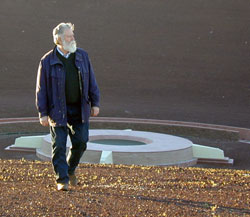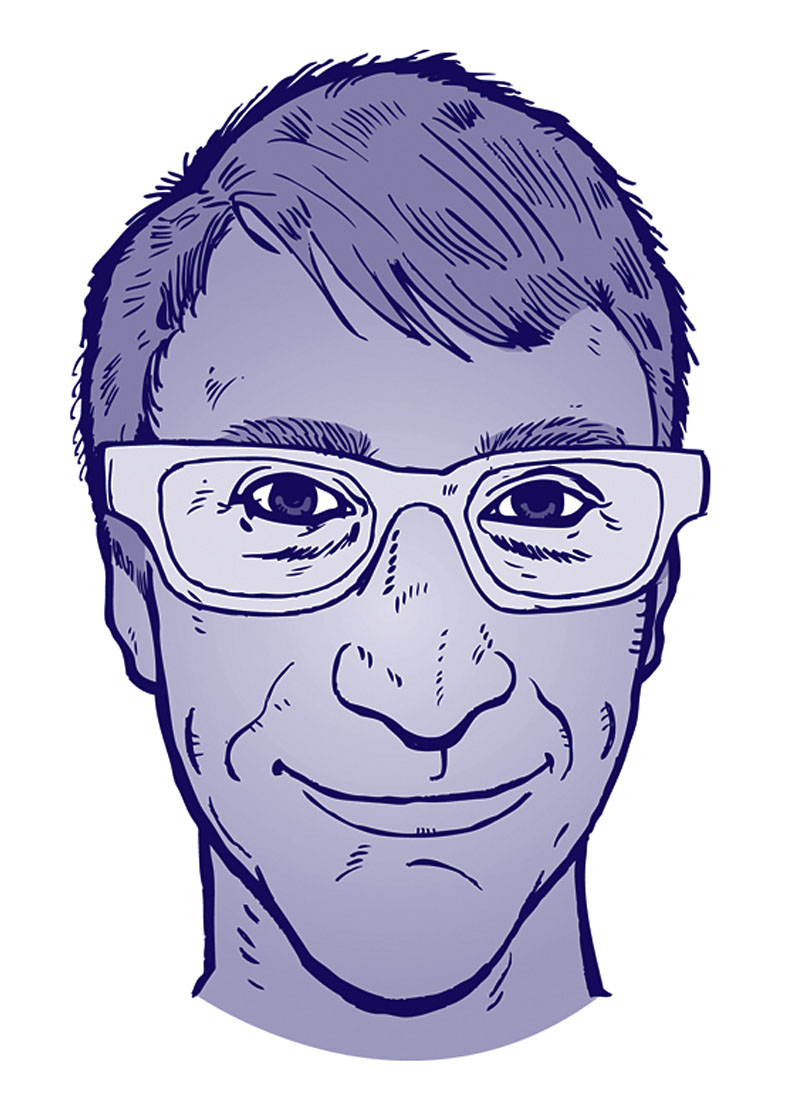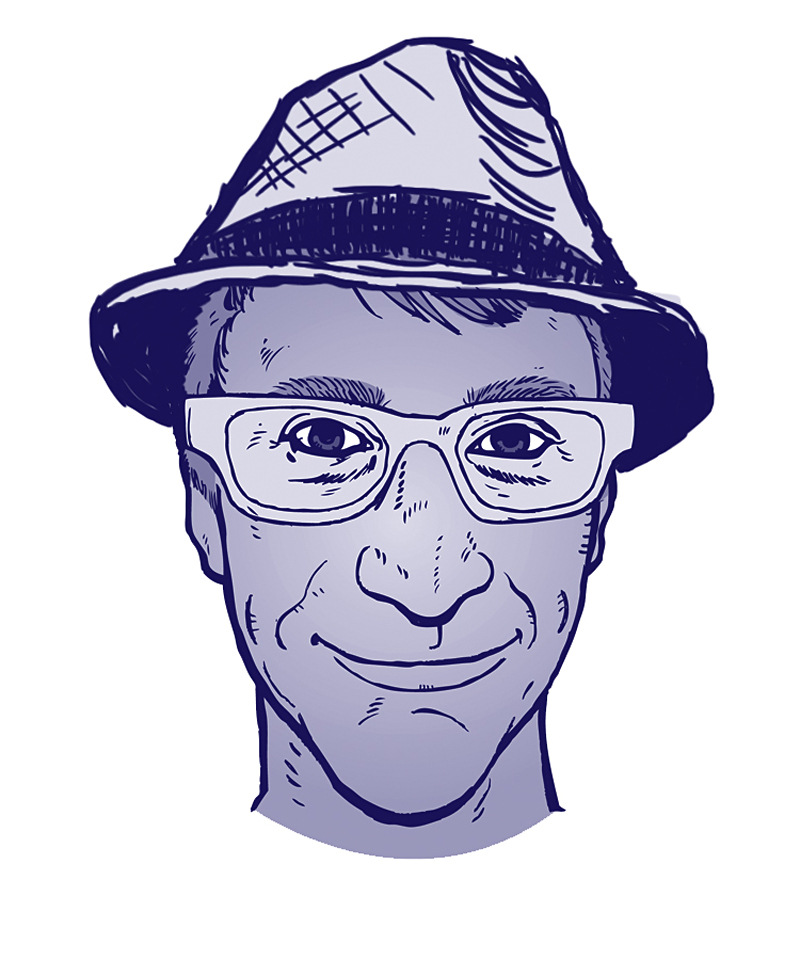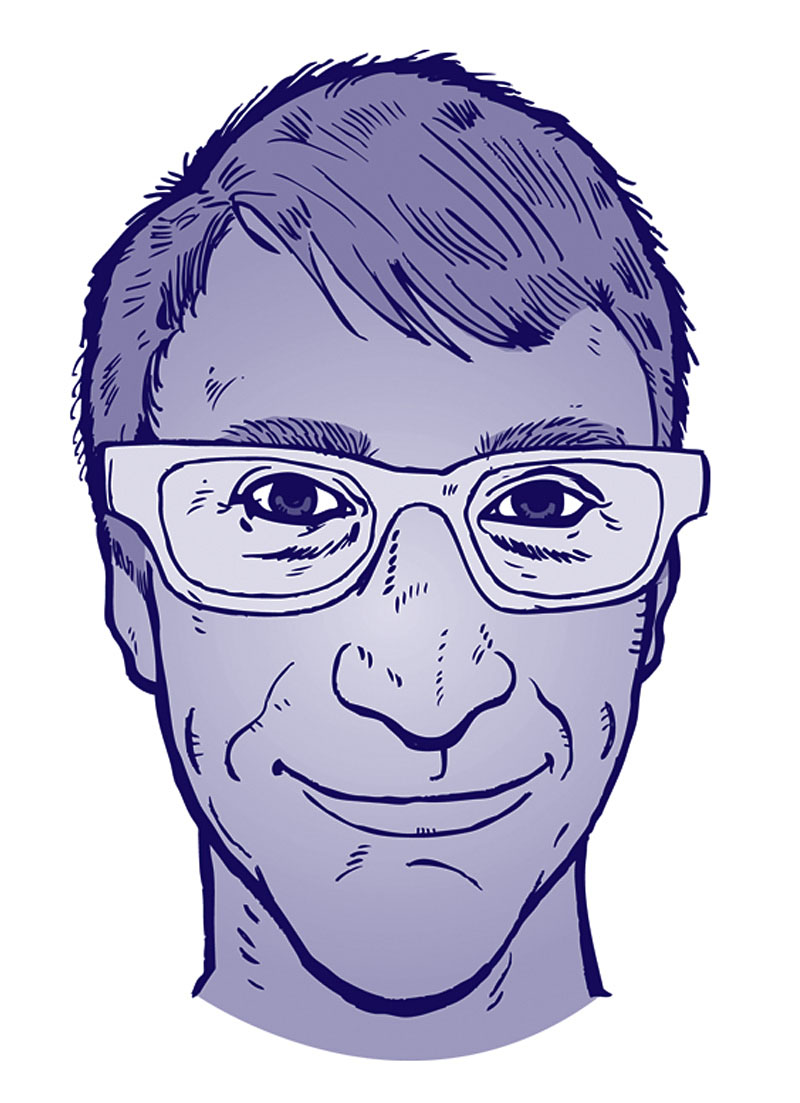On the morning of the press preview for James Turrell’s stunning new exhibit, “Knowing Light,” staff members of the Henry Art Gallery are wearing special illuminated lapel pins that recall the artist’s own work, slowly morphing from one color to another. The pins look like the badges of some cult, which would not be that surprising given the kind of awe Turrell inspires in the art world.
Routinely referred to as the greatest artist of our time, Turrell is world famous for a work very few people have actually seen: the “Roden Crater Project.” Conceived on a monumental scale unprecedented in modern art and inspired by ancient structures such as Stonehenge and the temple at Abu Simbel built by Ramses II, the still unfinished project is remaking an extinct Arizona volcano into a cathedral of perception, with chambers and tunnels that respond to celestial events and bring the visitor into an entirely new experience of the sky. Turrell has been working on the project since the early 1970s, when he began to emerge as the most prominent among a loosely associated group of California artists interested in light and the senses. It will not be open to the public for at least three to five years, and possibly much longer.
At his Henry press conference last week, the artist, with his long gray beard, jeans, blazer, and wide-brimmed hat, looked like a gentleman cowboy, which, it turns out, he actually is: He began ranching years ago to support the Arizona project. His plain, inflectionless manner of speech could be that of any other rancherat least until he says stuff like, “I want to bring the sky down into this ocean of air in which we live,” or mentions some European city where he has just completed another project. (As if being a cowboy and international art star weren’t enough, Turrell is also a pilot who flies around the country in vintage aircraft.)
Fortunately for those of us unlikely to ever see the thing, some of the designs from Turrell’s “Roden Crater Project” have proved to be detachable. One part of the crater, called a Skyspace, consisting of a chamber with an elliptical opening that makes the sky appear as a colored membrane suspended just overhead, has become almost an art-world franchise: P.S. 1 Contemporary Art Center in New York has a Skyspace, for example, as does the Scottsdale Center for Contemporary Art. And soon the Henry will, too.
Now under construction as a permanent addition to the gallery’s sculpture court, the cylinder-shaped Skyspace pavilion will accommodate up to 18 visitors. Its ceiling aperture will close, like Safeco Field, on rainy days, replaced with another light source. According to the Henry, this new Skyspace will also be the first to offer pleasure to passersby: Its skin of semiopaque glass will be lit from within like a Chinese lantern using an array of shifting LED lights, providing a spectacular nighttime viewing experience for U District cars and pedestrians.
Though the Skyspace won’t be completed until July, “Knowing Light,” Turrell’s exhibit inside the gallery, is open for the business of blowing minds right now. The Henry’s enormous Stroum gallery has been completely transformed for the show: Entire walls and rooms have been built according to the artist’s specifications, including the dim lighting that makes it feel like a hushed sanctuary. Almost as impressive as the art is the precision of Turrell’s floor plan. “Come stand here and look at this,” says Turrell, pointing out that from the doorway of the room containing the documentation of “Roden Crater,” a single print is perfectly framed in the doorway of another room, and that other prints come into view one by one as you approach.
The show consists of three installations, some early prints, plus models and photos of the “Roden Crater Project.” The centerpiece is “Spread,” a 65-foot-long chamber raised above the level of the gallery, and lit by an eerie, reflected blue light. The entrance to the chamber appears as a flat glowing plane midway between the ceiling and floor, like some magical color field painting you can walk into. The sense “Spread” gives of stepping into a sacred dream world is heightened by the approach to the entrance, a set of carpeted steps in the form of a bisected ziggurat. Turrell, when asked, plays down the significance of the steps, but it’s impossible to avoid the association with pyramids and Babylonian temples. Looking out from inside “Spread,” the white walls of the gallery appear a light golden color; stepping out again, it is possible to actually see the color change back. The number of people who can enter the chamber at one time will be limited to a half-dozen or so, which could result in long lines. The show will be up until October, however, so, like Lord of the Rings at Cinerama, this is probably something best seen a few months after the opening, when the crowds have subsided.
I found that the senses-heightening narcotic effect of “Knowing Light” persisted after leaving the gallery. I became transfixed by the glow of the sun shining through the translucent rubber casing of the pull-string in a Metro bus and the glow of light around a closed door in my apartment. Before leaving the Henry, I had stopped in the gift store to buy one of those illuminated lapel pins for myself.








